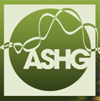Let’s kick off this month’s recognition with Audrey Papp and Wolfgang Sadee at Ohio State University for their work on “Flavopiridol Pharmacogenetics: Clinical and Functional Evidence for the Role of SLCO1B1/OATP1B1 in Flavopiridol Disposition” just published in PLoS ONE. (All abstracts below.) Also in pharmacogenetics (albeit in mice) this month is Tristan Sissung at the NIH National Cancer Research. His… Read more »
Please see our updated tutorials for CNV Analysis by visiting: http://goldenhelix.com/resources/SNP_Variation/tutorials/index.html The following statement is representative of a common question that is posed to the Golden Helix support team: “I followed all of the steps in the SVS7 CNV analysis tutorial, but my results seem kinda funny. The segment means are skewed to the left and it doesn’t look like… Read more »
If you have had any experience with Golden Helix, you know we are not a company to shy away from a challenge. We helped pioneer the uncharted territory of copy number analysis with our optimal segmenting algorithm, and we recently handcrafted a version that runs on graphical processing units that you can install in your desktop. So it’s probably no… Read more »
Recognition this month begins with Eric Londin at Coriell Institute for Medical Research for his publication in PLoS ONE: “CoAIMs: A Cost-Effective Panel of Ancestry Informative Markers for Determining Continental Origins.” (Abstract below). Also recently published in PLoS ONE is Chiara Magri with Brescia University School of Medicine on her study locating new CNVs in schizophrenia. (Abstract below) Skipping over… Read more »
Well, it’s that time of year again, when the genetics world convenes for the American Society of Human Genetics Annual Meeting. This year, we have the privilege of heading to the nation’s capital for the week of November 2-6. ASHG is always a highlight of our year as Golden Helix employees get the opportunity to talk to so many researchers… Read more »
The week of October 10-16th was a busy time in our industry. Hundreds of biostatisticians, genetic epidemiologists, and statistical geneticists gathered in Cambridge, MA for the annual conference of the International Genetic Epidemiology Society (IGES) on October 10-12, followed by the biennial Genetic Analysis Workshop (GAW) on October 13-16. I had the opportunity to participate in both conferences, and I… Read more »
Why should a genetic researcher care about the latest in video gaming technology? The answer is video graphics cards or Graphics Processing Units (GPUs). For certain computational tasks, a single GPU can perform as well as an entire cluster of CPUs for only a fraction of the cost. And because video gaming has grown into a highly competitive multi-billion dollar… Read more »
The scripting environment in SVS 7 allows for cross-communication between the powerful Python scripting language and the tools used in data analysis. Scripting is often the most effective way to make new features available to customers prior to new software releases. We often write scripts based on a specific customer’s need and then expand availability to all customers, many who… Read more »
The Golden Helix sales team recently came to me for recommendations regarding best practices for incorporating public controls in SNP GWAS. It seems that there has been a surge of questions regarding this practice over the past few weeks from our customers. Initially, I laughed at the irony of being asked to outline the best practices for what I see… Read more »
It’s been a busy month for the genetics community, and Golden Helix customers are no exception. First in the line up, congrats to Marta Artieda with Progenika Biopharma in Spain for her work on “Association of the Intergenic Single-Nucleotide Polymorphism rs10865331 (2p15) with Ankylosing Spondylitis in a Spanish Population” in the Journal of Rheumatology (abstract below). Next up, kudos to… Read more »
Over the past 3 years, Golden Helix has analyzed dozens of public and customer whole-genome and candidate gene datasets for a host of studies. Though genetic research certainly has a number of complexities and challenges, the number one problem we encounter, which also has the greatest repercussions, is born of problematic experimental design. In fact, about 95% of the studies… Read more »
How much fun is a person allowed to have when going to a conference? That kind of sums up my personal experience going to the first ever Capita Selecta in Complex Disease Analysis (bi-annual) conference in Leuven, Belgium. Not only was it fun, but the conference program was packed with interesting talks and short courses. Dr. Kristel van Steen and… Read more »
In the ongoing quest to empower our customers with the latest in genetic analysis methods, we are continually releasing new functionality for SNP & Variation Suite 7 in the form of add-on scripts. Add-on scripts are written in Python, a clear and powerful object-oriented programming language similar to Java or Perl. Python provides fully-programmatic access to most aspects of the… Read more »
We’re inspired by significance. Every tool we develop and every service we deliver is designed to help our customers achieve significance in their research. Not only statistical, but scientific and personal significance as well. The icing on the cake is being able to share what our customers do and discover with others in the scientific community. We applaud each author… Read more »
“Where is the missing heritability?” is a question asked frequently in genetic research, usually in the context of diseases that have large heritability estimates, say 60-80%, and yet where only perhaps 5-10% of that heritability has been found. The difficulty seems to come down to the common disease/common variant hypothesis not holding up. Or perhaps more accurately, that the frequency… Read more »
Including the completion of the Human Genome Project in 2003, scientists have created whole genome sequence maps for over 1,000 species. From maize to oysters, the quest to investigate different species’ genetic code continues. Mapping is the “first step” that provides a baseline for further study into differences between species, the occurrence of certain diseases, and the prevalence of traits… Read more »
Accuracy and completeness of genotype data are among the most important factors for a successful genome-wide association study (GWAS), and must not be taken lightly. The Golden Helix team is always on the lookout for methods to improve data quality, and we have recently found the BEAGLE and BEAGLECALL software packages to be very useful in this regard. BEAGLE is… Read more »
As Andy Ferrin and I drove the five-hour car ride home from a cytogenetics conference, we had a lot of time to reflect on the persistent themes we heard in presentations and dialog among conference attendees. Taking somewhat of an outsider view, we traced each complaint, each sigh of frustration, and the unverbalized assumptions behind opposing viewpoints, and they all… Read more »
In the paper Runs of homozygosity reveal highly penetrant recessive loci in schizophrenia, Todd Lencz, Ph.D. introduced a new way of doing association testing using SNP microarray platforms. The method, which he termed “whole genome homozygosity association”, first identifies patterned clusters of SNPs demonstrating extended homozygosity (runs of homozygosity or “ROHs”) and then employs both genome-wide and regionally-specific statistical tests… Read more »






